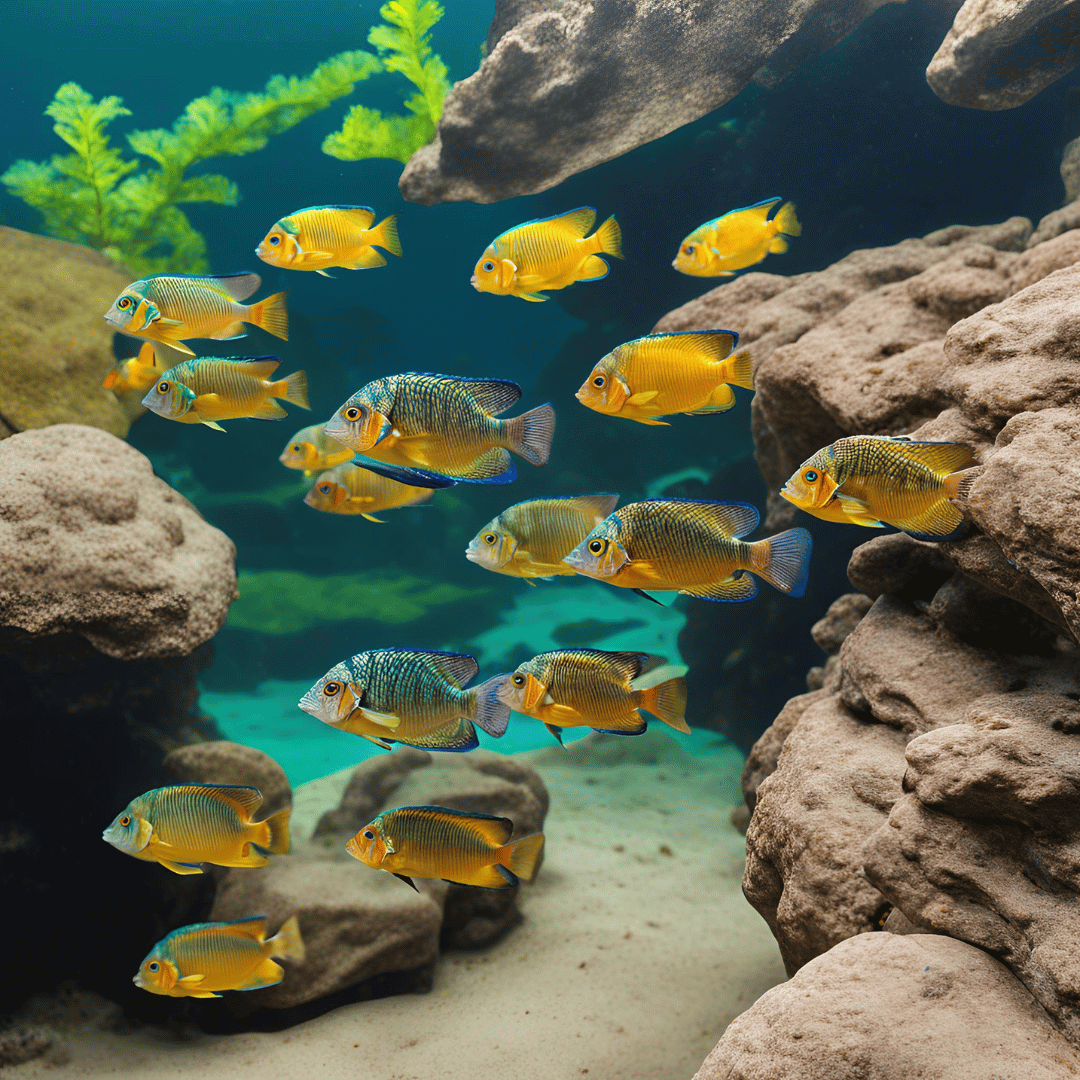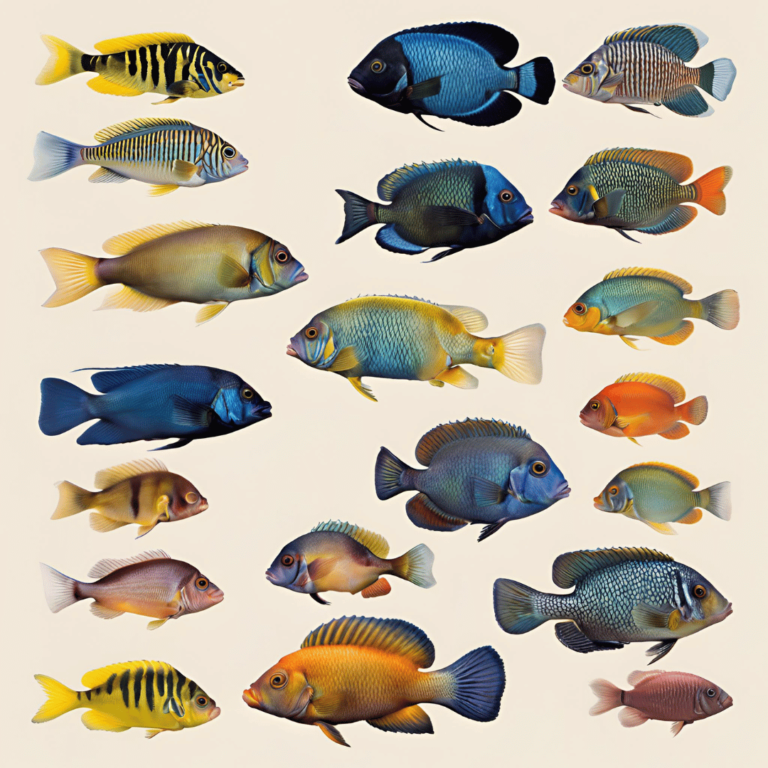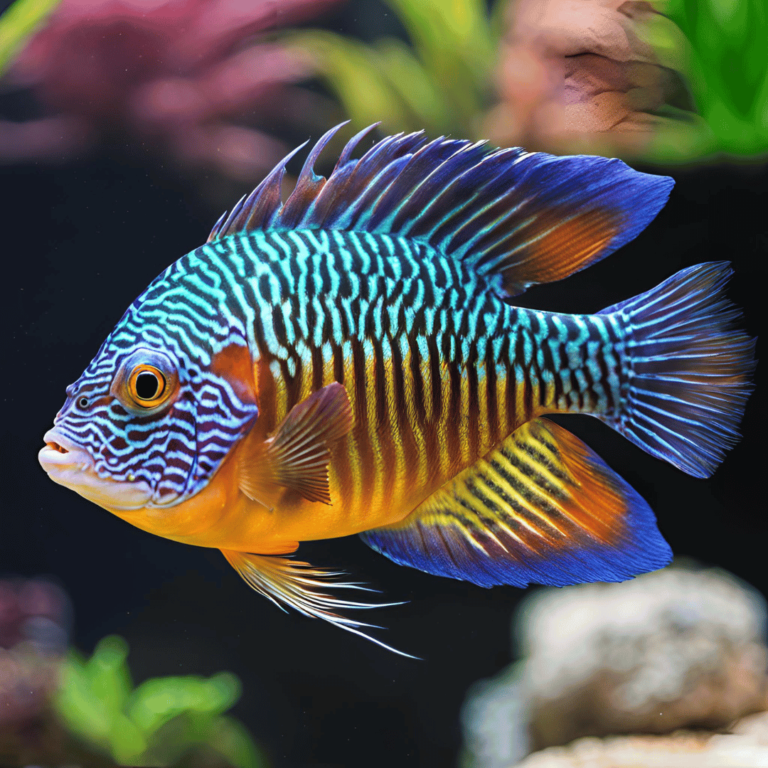Your trusted guide to cichlid care, tank setups, and quality products.

Peacock Cichlids Origins: 7 Fascinating Facts You Must Know
Discover the fascinating story behind peacock cichlids! Our comprehensive guide explores their origins, natural habitat, and historical journey from the wild to aquariums.
Image Credits Canva
Peacock cichlids are among the most sought-after fish in the aquarium hobby. Their dazzling colors, engaging behaviors, and peaceful nature compared to other cichlid species make them a favorite for aquarists worldwide. But what lies behind their captivating allure? By delving into Peacock Cichlids Origins, we uncover their evolutionary journey, natural habitat, and what makes them such prized additions to aquariums.
Here are seven fascinating facts about Peacock Cichlids Origins and their journey from the wild to your aquarium.
At PeacockCichlid.com, we believe in transparency and honesty with our readers. Some of the links in this article are affiliate links, which means we may earn a small commission if you make a purchase through them—at no additional cost to you. These commissions help support our site, allowing us to continue providing expert advice, in-depth guides, and valuable content for Peacock Cichlid enthusiasts like you.
We only recommend products that we trust and believe will be beneficial for your aquarium. Thank you for your support!
1. The Origins of Peacock Cichlids in Lake Malawi
Peacock cichlids (Aulonocara spp.) hail from Lake Malawi, one of Africa’s Great Lakes. Situated in East Africa, Lake Malawi is renowned for its biodiversity, hosting over 1,000 species of cichlids. Of these, more than 20 species belong to the Aulonocara genus, named “peacock cichlids” for their extraordinary coloration.
The lake’s unique ecosystem, characterized by clear, mineral-rich waters and diverse underwater landscapes, has played a pivotal role in shaping Peacock Cichlids Origins. Over millions of years, peacock cichlids have adapted to specific ecological niches, resulting in the striking variety of species and color morphs we see today. These adaptations highlight the fascinating story of Peacock Cichlids Origins and their enduring connection to Lake Malawi.
2. Why They Are Called “Peacock” Cichlids
The name “peacock” cichlid perfectly captures their vibrant, jewel-like hues. Much like the iridescent plumage of a peacock bird, male peacock cichlids display brilliant blues, reds, yellows, oranges, and metallic greens or purples. These stunning colors are not just for show; they serve an important purpose in the wild.
Male peacocks use their vivid coloration to attract females during mating. The brighter and more vibrant the male, the better his chances of securing a mate. Female peacock cichlids, on the other hand, are less colorful, often sporting muted tones that help them blend into their environment. This distinction in appearance is another intriguing aspect of Peacock Cichlids Origins, demonstrating the role of natural selection in their evolution.
3. Their Natural Habitat: Lake Malawi’s Sandy Zones
Lake Malawi’s underwater world is as diverse as its inhabitants. Peacock cichlids are typically found in sandy and intermediate zones where sand meets rock. These areas provide the perfect conditions for peacock cichlids to hunt, establish territories, and reproduce.
The sandy substrate is crucial to their natural behavior. Peacock cichlids are carnivorous, feeding on small invertebrates buried in the sand. They use specialized sensory pores on their heads, part of their lateral line system, to detect hidden prey. This fascinating adaptation allows them to thrive in their sandy habitats, showcasing their unique evolutionary traits. The ecological context of Peacock Cichlids Origins highlights the importance of their sandy environments for survival.
These habitats also play a critical role in shaping their interactions with other cichlids in Lake Malawi. The sandy zones provide ample opportunities for species to coexist, further enriching the story of Peacock Cichlids Origins.
4. Behavior of Peacock Cichlids in the Wild
In their natural environment, peacock cichlids exhibit behaviors centered around feeding and reproduction. Unlike their aggressive mbuna neighbors, peacock cichlids are relatively peaceful. Males become territorial during breeding, showcasing their colors to attract females and ward off rivals. Outside of mating season, they coexist harmoniously with other species in the lake.
Their diet consists of small insects, crustaceans, and other invertebrates, which they uncover by sifting through the sandy substrate. This foraging behavior is a hallmark of their origins and an essential consideration for aquarists aiming to replicate their natural habitat. Understanding these aspects of Peacock Cichlids Origins helps aquarists provide a more enriching environment.
This peaceful nature also makes them more compatible with other cichlids in mixed-species tanks, adding to their popularity among aquarists.
5. The Journey to the Aquarium Trade
Peacock cichlids were first documented during the late 19th and early 20th centuries by explorers studying Africa’s Great Lakes. Their vibrant colors and manageable size made them an instant hit among aquarium enthusiasts. Over time, Peacock Cichlids Origins became a staple topic in the hobby, with most specimens now bred in captivity rather than sourced from the wild.
Selective breeding has enhanced their color morphs, offering aquarists a wide variety of stunning options. However, their wild origins in Lake Malawi remain a point of fascination, adding to their allure in the aquarium trade. Knowing the roots of Peacock Cichlids Origins inspires aquarists to appreciate their history and care requirements.
The popularity of peacock cichlids also reflects a growing interest in sustainable aquarium practices, emphasizing the importance of captive breeding in preserving their natural populations.
6. Wild vs. Captive-Bred Peacock Cichlids
Captive breeding has revolutionized the availability and sustainability of peacock cichlids. While wild-caught specimens often boast more vibrant colors, they can be challenging to acclimate to aquarium life. Captive-bred peacock cichlids, on the other hand, are better adapted to tank conditions and are generally healthier and more disease-resistant.
For aquarists interested in preserving specific species or maintaining the purity of color morphs, wild-caught fish remain an option. However, supporting captive breeding programs helps reduce the pressure on Lake Malawi’s ecosystems, ensuring the long-term survival of these remarkable fish. This balance between wild and captive populations reflects the broader narrative of Peacock Cichlids Origins.
Understanding this balance is crucial for aquarists who wish to contribute to the conservation of peacock cichlids and other cichlids in their natural habitats.
7. How to Recreate Their Natural Habitat in an Aquarium
To provide the best care for peacock cichlids, aquarists should aim to replicate their natural habitat as closely as possible. Here’s how:
- Substrate: Use a sandy substrate to encourage natural foraging behavior.
- Rock Structures: Add rock formations to mimic the intermediate zones of Lake Malawi, creating territories and hiding spots.
- Water Conditions: Maintain hard, alkaline water with a pH between 7.8 and 8.6. The temperature should stay between 75°F and 82°F.
- Diet: Offer a carnivorous diet of high-quality pellets, frozen or live foods, replicating their wild feeding habits.
By understanding Peacock Cichlids Origins, aquarists can create an environment that supports the health and vibrancy of their fish.
Conservation and Sustainable Practices
Although peacock cichlids are not endangered, their wild populations face threats from overfishing, pollution, and habitat destruction. Supporting sustainable aquarium trade practices is vital for their conservation. Choosing captive-bred fish and supporting responsible breeders helps protect Lake Malawi’s ecosystems and ensures the future of these stunning fish.
Educating others about Peacock Cichlids Origins and sustainable practices can further promote awareness and conservation efforts.
Conclusion: The Importance of Understanding Peacock Cichlids Origins
By exploring Peacock Cichlids Origins, we gain a deeper appreciation for their natural beauty and unique behaviors. Understanding their wild habitat, diet, and reproduction enables aquarists to provide optimal care, ensuring these vibrant fish thrive in aquariums.
Share this knowledge with fellow aquarists to promote awareness and appreciation for Peacock Cichlids Origins. Together, we can celebrate their natural history and ensure their continued success in both the wild and in home aquariums.
Now that you’ve uncovered some fascinating insights into the origins of Peacock Cichlids, why not continue enhancing your aquarium care knowledge? For instance, you can dive deeper into maintaining an ideal environment by exploring Peacock Cichlid Tank Maintenance: 14 Proven Tips for Success and mastering water quality in Peacock Cichlid pH Stability: 10 Powerful Steps for Success. If you’re looking to avoid common pitfalls, our guide Top 10 Mistakes to Avoid When Keeping Peacock Cichlids offers invaluable advice, while Peacock Cichlid Care: 7 Powerful Tips for Beginners is perfect for those just starting out.
At peacochcichlid.com, we’re dedicated to helping you achieve the best for your aquatic friends,so be sure to visit us again soon and follow our social media for the latest tips and updates!
FAQ’s
What are Peacock Cichlids, and where do they originate?
Peacock cichlids are vibrant freshwater fish from Lake Malawi, East Africa. Their origins lie in the lake’s unique ecosystem, which supports incredible biodiversity.
How are Peacock Cichlids different from other cichlids?
Peacock cichlids are known for their vibrant colors and peaceful behavior compared to the often aggressive nature of other cichlids like mbuna.
Why are Peacock Cichlids called “peacocks”?
The name comes from their jewel-like coloration, similar to the iridescent feathers of a peacock bird, especially in males.
What role does Lake Malawi play in Peacock Cichlids Origins?
Lake Malawi’s clear, mineral-rich waters and diverse habitats have shaped the evolution and variety of peacock cichlids over millions of years.
How do Peacock Cichlids interact with other cichlids in the wild?
Peacock cichlids are less aggressive and coexist with other cichlids in sandy and intermediate zones, where territories are established.
Are wild-caught Peacock Cichlids better than captive-bred ones?
Wild-caught specimens may have brighter colors but are harder to acclimate. Captive-bred fish are healthier and better suited for aquariums.
What should I feed Peacock Cichlids in my aquarium?
Offer a carnivorous diet of high-quality pellets and frozen or live foods to replicate their natural diet of invertebrates.
How can I recreate Peacock Cichlids’ natural habitat?
Use sandy substrates, rock structures, and maintain alkaline water with stable temperatures to mimic their Lake Malawi environment.
Are Peacock Cichlids compatible with other cichlids in aquariums?
Yes, their peaceful nature makes them compatible with other non-aggressive cichlids, provided tank conditions meet their needs.
Why is conservation important for Peacock Cichlids?
Conservation ensures the survival of wild populations by reducing overfishing and habitat destruction, highlighting the importance of sustainable practices.



